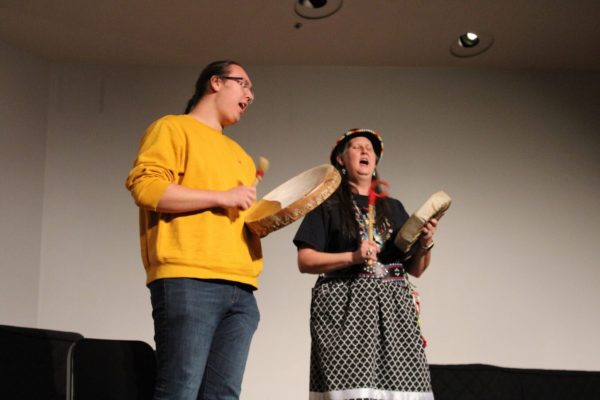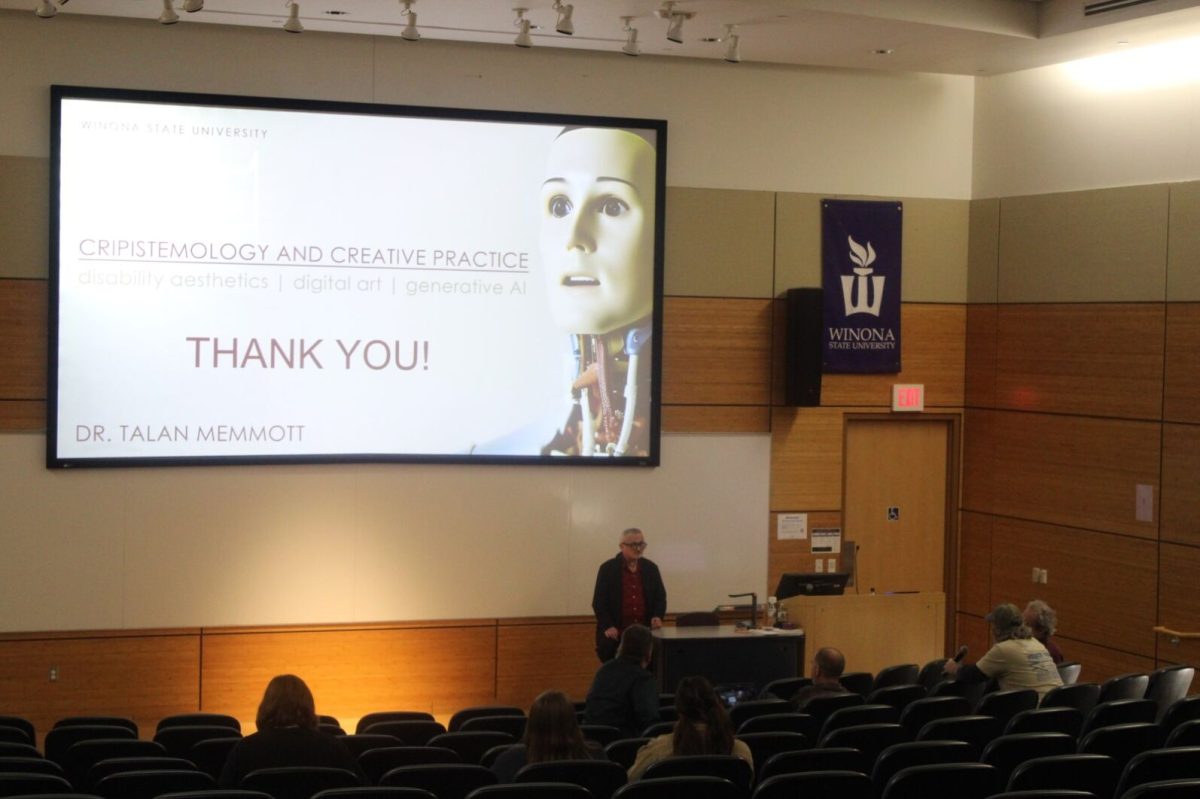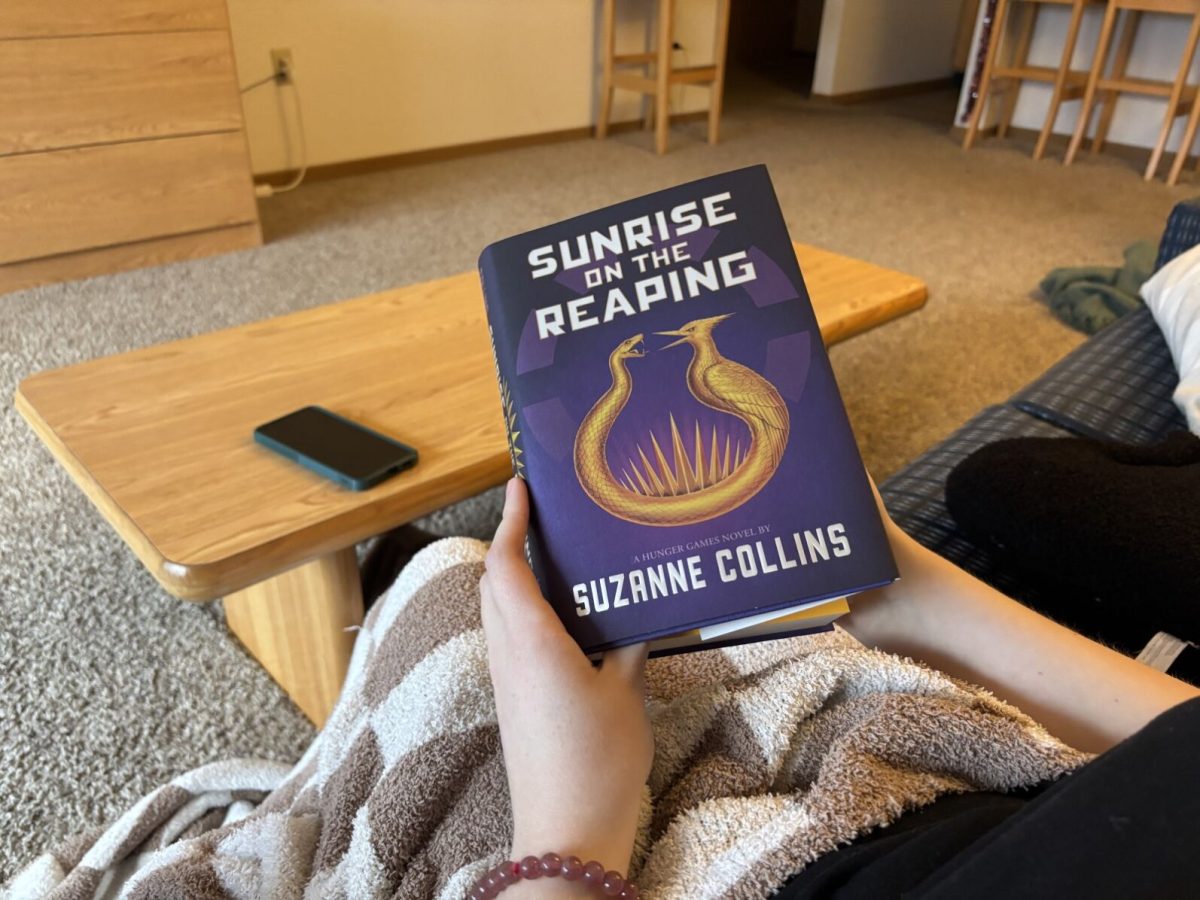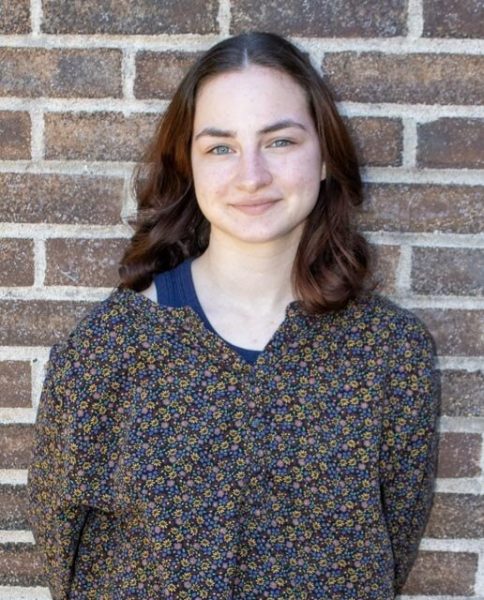Music is something that universally exists. Every known culture partakes in some form of music. While it can be used as a uniting force, each culture has their own differences and different music preferences. Similarly to how every individual doesn’t sound the same, every song is different. This is a sentiment that was expressed during the International Music Series, Thursday, November 7, 2024.
Elizabeth “Lyz” Jaakola was the musician of the night, along with her son Xander Ripley-Jaakola. Both are musicians in their own right, each demonstrating their own pieces along with the cultural music. Jaakola is an Ojibwe-Anishinaabe musician, who has experience with singing, various instruments and composing. She also teaches at Fond du Lac Tribal and Community College.
During the concert, Jaakola and her son played several different songs on different instruments, each of which had their own significance. A key point Jaakola made during this concert was that each instrument’s sound is different. In her culture instruments are crafted, and each one is different from one another. The instruments included were drums, shakers, flutes and the voice itself. All of which were unique in sound and meaning.

One thing that she shared was that the drums specifically represent the heart and are considered to have spirit. Therefore, drums are treated with respect and are to be well taken care of. The voice is also considered to be an instrument which is a part of every person. It is what makes us different, but with that it is also what makes us similar.
Music has a direct impact and influence on people. As Jaakola stated during the concert, “Our ears are always hearing.” We are constantly listening to and absorbing the world around us. Given that music exists everywhere, it’s important that we intake a variety of things. Through this intake people can experience cultures that they never have before.
Aaron Lohmeyer, who is responsible for coordinating the international music series, as well as several other music related events. The purpose of this event, Lohmeyer shared, was for musicians in Minnesota to share their cultures through their music. “Music is a wonderful way to explore culture and its ability to celebrate diverse identities.” Lohmeyer said. Music acts as a conduit for cultural exchange, from the exchange of playing and listening, to the exchange that occurs between musicians.
This can be seen in instances where Jaakola and her son improvised a song on a flute. They had to work with one another to create something. This connects with Jaakola’s sentiment about how we are always listening. In order to learn, you must listen and when you listen you can appreciate what you hear. This cultural exchange in music was also demonstrated when Jaakola and Ripley-Jaakola each played a piece that they wrote individually. Their pieces were different not only from the cultural pieces, but also from each other’s. Yet, they still got the same round of applause.
Music is such a diverse genre of art and creation. Even within one culture there are so many different kinds of ways music can be created, interpreted and categories for them to fall into. Paul Dice, a composer and the person who is responsible for coordinating the communication with the music artist for this event and notes how different the stories conveyed in music can be while still being very culturally rich. “Music can depict joyful celebrations, historic battles, the planting and harvesting of crops, the beauty and serenity of nature and animals, flowers blooming, festival gatherings, folk tales and other stories handed down throughout time and much more.” Dice said.
The International Music Series demonstrated how music affects us as people and how culture is shared through music. Any piece of music can be performed by anybody, and each version will be different. Music is something we as a population share, regardless of the differences or similarities. Musical diversity is something that should be celebrated, and not erased. Music is in everyone and should be shared because of its differences.


































